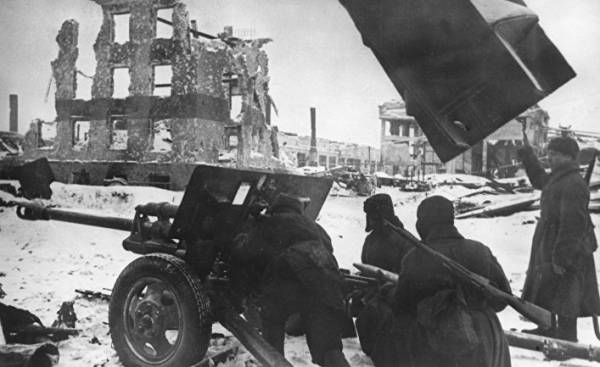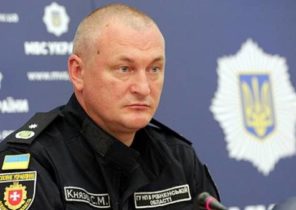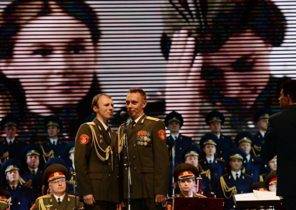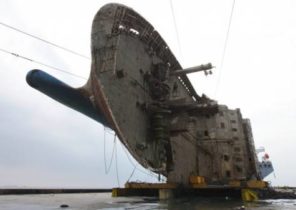
Soviet, and after them and Russian historians believe that the great and incredibly bloody battle of Stalingrad, one of the decisive battles of the Second world war began on 17 July 1942.
However, it is worth to emphasize that the victory in this battle was more a matter of prestige, and it was prompted largely by political considerations than purely military. The Germans recently won in the Kerch and Kharkov and once again felt himself on the horse, relieved of their anxiety after the defeat inflicted on them at Moscow in December last year. Therefore, on 18 June 1942, they began operation “Blau”, whose implementation was entrusted to the German group of armies “South”. The 800-kilometer front, from Kursk to Taganrog on the Azov sea gradually went on the offensive 97 divisions that formed five German and 2nd Hungarian army. A total of more than 900 thousand people, 17 thousand guns and mortars, and 1260 tanks and self-propelled artillery. The offensive was supported from the air 1640 German planes. The reserve remained the 3rd and 4th Romanian army and at the same time moving Italian divisions.
To take the city at any cost
Initially the brunt of the German offensive was focused on Stalingrad, but after the capture of Voronezh on the sixth of July, the Reich Chancellor Adolf Hitler transferred the 4th Panzer army of Colonel-General Hermann Hoth on the Caucasian direction. Stalingrad was coming soon the 6th army of General of Panzer troops Friedrich Wilhelm Ernst Paulus. On 21 August she crossed the don, and in two days reached the Volga North of Stalingrad. The 6th army consisted of five army corps with 14 divisions, they consisted of 270 thousand soldiers, 500 tanks and self-propelled artillery, and three thousand guns and mortars. That is, the military power of the army corresponded to the power of several Soviet armies at the time. From the air the 6th army has supported the 4th air fleet of Colonel-General Wolfram von Richthofen. On the same day, 600 Luftwaffe bombers made the so-called supernait Stalingrad, during which killed 40 thousand peace inhabitants.
The Supreme command gave the order to protect the city named after Stalin (until April 1925 it was called Tsaritsyn). But the führer wanted to win it for the same reason. Also, Stalingrad was a major transportation hub. So Hitler ordered to return to Stalingrad the direction of the 4th tank army. However, he chose not to cross the Volga, to compress the vise to the East of the city, and decided to strike a direct blow, and this resulted in a grueling battle in which both sides suffered huge losses.
For every street, for every house
From 12 September, when the Germans reached the outskirts, on the defense of Stalingrad, which is due to the bombardment gradually turned into a pile of rubble (paradoxically, they did a good job for the defenders) took 62nd army Lieutenant General Vasily Ivanovich Chuikov. He took command of the eighth army September, a mediocre Lieutenant-General Anton Ivanovich Lopatin, who argued that the city can not protect, so he just wanted to take Stalingrad.
September 13, Paulus threw at Stalingrad all his forces: 100 thousand people, two thousand guns and mortars, 500 tanks and self-propelled. Against him Chuikov put a total of 54 thousand soldiers and 110 tanks and self-propelled guns from the East Bank of the Volga has supported 900 guns and mortars. At the most critical moment on 15 September in the battle to take the elite 13th guards division major General Hero of the Soviet Union Alexander Ilyich Rodimtsev, who stormed the Mamaev Kurgan.
At dawn on October 14, Paulus strike force of 90 thousand soldiers and 2.3 thousand guns and mortars, 300 tanks and self-propelled. They were opposed by 55 thousand soldiers Chuikov with 1.4 thousand guns and mortars, and with only 80 tanks and self-propelled installations. Chuikov already defended a 20-kilometer section of the city a width of three to four kilometers.
Despite the fact that the Red army fought fiercely for every street and every house, in mid-November, the Germans drove the red army in a narrow strip along the Volga. About the incredibly brutal fighting is evidenced by the fact that of the 37-th guards rifle division major-General Victor G. Zholudeva, which were sent to Stalingrad on the third of October, survived only 114 people. From the next 122 infantry division survived even less fighters — 57.
November 11, Paulus began the final attack on the Volga city. The Germans seized the factory Barricades and cut off from the main forces of the 62nd army 138-th infantry division of Colonel lyudnikov, which were only 70-100 people. From Chuikov remained 47 thousand soldiers and 800 guns and mortars, as well as 19 tanks. He kept only two city blocks and one suburban town.
It seemed that at any time Stalingrad may fall. For three months the defenders repelled four powerful attack and 700 assaults. For 68 days for every square kilometer of the city fell by 76 thousand artillery shells. According to the official Russian statistical booklet “Without a stamp “top secret”,” from 1993, over 125 days of the Stalingrad strategic defensive operation, which ended on 18 November 1942, the loss amounted to 643 842 persons, 137 of 12 guns and mortars, 1426 tanks and self-propelled installations, and 2063 combat aircraft. But the aggressor is not easily escaped. According to the Soviet (probably exaggerated) estimates, on the outskirts of the Volga and the street fighting in Stalingrad, the Germans lost from 650 to 700 thousand soldiers, of which 182 800 died.
The transition to the offensive
Elongation of the German front and the fact that the main forces of the 6th and 4th Panzer army, bogged down in heavy fighting in the city, allowed the Soviet command to gain time to prepare for the counteroffensive. It started 19 Nov, and coordinated it is, of course, Marshal Georgy Zhukov. It is interesting that his forces had no special advantages (only in tanks and self-propelled). Southwestern, don and Stalingrad front numbered 1 015 200 people, 13 of 535 guns and mortars (without 50 mm caliber) rocket launchers 1400, 1560 tanks and self-propelled guns, and 1,350 aircraft. Confront them German, Romanian and Italian troops had 1 011 500 soldiers, 10 290 guns and mortars, 675 tanks and 1,216 aircraft.
The red army command decided that the weak link are the two Romanian armies (3rd and 4th), lacking in anti-tank guns, tanks and all the modern weaponry. The army and fell the brunt of the don front, Lieutenant-General Konstantin Rokossovsky and the South-Western front Lieutenant-General Nikolai Fedorovich Vatutin. On 23 November the leading units of the two fronts near Kalach-on-don. The 6th army and part of 4th Panzer army was encircled.
It is worth mentioning that the Soviet high command had no idea how strong surrounded their group. Intelligence chief of the don front, Colonel Vinogradov considered that it is about 80-90 thousand men and ten divisions. Subsequently he had to answer for his mistake, because at the end of November the boiler was 330 thousand people (22 divisions), 5230 guns and mortars and 340 tanks and self-propelled.
Lost chance
In the beginning the Germans were able to break the ring and flee to the West, but Hitler ordered the creation of “fortress Stalingrad” and to release it from the encirclement blow from the West. He took this decision under the influence of boasting of Marshal of the Reich Hermann Goering. He boasted that the Luftwaffe could deliver in surrounded by the city up to 500 tons of food and ammunition per day. However, as it turned out, the air bridge in the boiler was daily to deliver only 80 tons.
The attack of army group “don” Marshal Fritz Erich von Manstein to break the ring, let 12-23 December to get closer to Stalingrad only 50 kilometers, and the army of Paulus was so weak that are unable to take retaliatory action. The troops of the southwestern front Vatutin’s front and the Stalingrad front under the command of Colonel-General Andrei Ivanovich Eremenko was again rejected Manstein forces from Stalingrad.
The end of the boiler
The eighth of January 1943, the Red army pressed the Germans, who are already exhausted, to Stalingrad, narrowing down the boiler. The tenth of January, began the final phase of the liquidation of the encircled — the “Ring” operation. Most of the remaining soldiers, including Paulus, who was just awarded the title of Marshal, surrendered on January 31. A smaller group under the command of Colonel-General Karl Strecker, cut off in the North, surrendered only on the second of February. Stalingrad strategic offensive operation ended in a stunning victory. According to the above mentioned Russian study of the Soviet armed forces lost in this operation, 485 777, 3591 guns and mortars, 2915 tanks and self-propelled guns and 706 aircraft. According to the same source, the enemy lost more than 800 thousand soldiers, 32 divisions and three brigades were completely destroyed and 16 divisions suffered heavy losses.
Still impossible to pinpoint the number of victims of Stalingrad ring. Manfred Kehrig talked about 58 110 dead Germans and 123 998 captured. In addition, the boiler has killed at least ten thousand Romanians. The second conversion Kerig left a number of dead Germans unchanged, but increased the number of captured to 149 411. Liquidation headquarters reported only about 11 036 dead, but 155 660 were captured. Rüdiger Overmans, which today is the largest specialist in German military losses in world war II, says about 60 thousand dead Germans and two thousand Romanians. According to Overmansa, the prisoner was 110 thousand Germans, of which 105 thousand (!) died.
The Soviet data are very different. According to them, until the tenth of January 1943 in the Stalingrad cauldron killed 45 thousand soldiers of the enemy, and 147 thousand were killed, froze to death or died of exhaustion during the operation “Ring”. More than 91 thousand Germans and Romanians surrendered. These losses included 2.5 thousand officers, 23 General and a Marshal.
Significant losses incurred and the power of the Luftwaffe, which until now was won on the Eastern front, triumph over triumph. During the air supply of the German troops trapped in the Stalingrad cauldron, the Luftwaffe lost 495 aircraft (these losses were primarily irreparable). We are talking about the five squadrons at full strength or General aviation building.
Some experts consider the battle of Stalingrad the bloodiest in history. According to some researchers, in the course of this battle from September 1942 to 31 January 1943 both sides were killed and 770 thousand people. Stephen Walsh estimates the loss of the Germans in the 600 thousand killed, wounded and captured. Their allies, these losses reached 494 374 people (84 830 dead, missing and captured, and 29 690 wounded and frostbitten Italians, 158 854 dead, wounded and missing of the Romanians and 80 thousand killed and 63 wounded thousands of Hungarians). On the second of February 1993, the Melbourne newspaper the Age wrote on the occasion of the 50th anniversary of the battle of Stalingrad that “two million men, women and children… died.” Probably included in this figure and casualties among civilians, which in Stalingrad killed more than 60 thousand.
Divine justice
Alexander Werth, who during the war worked as a correspondent of the British newspaper the Sunday Times in the Soviet Union, wrote in his book “Russia at war”: “This spectacle of dirt and misery in the courtyard of the red Army was my last impression of Stalingrad. I remembered the long and anxious days of the summer of 1942, and the night of the London blitz, and photos of Hitler, grinning on the steps of the Cathedral of the Madeleine in Paris, and dreary days of 1938 and 1939, when Europe is nervously caught the Berlin radio and listen to the cries of Hitler, followed by a cannibalistic roar of the German crowd. And I saw the sign severe but divine justice in these frozen cesspools in these gnawed horse skeletons and yellow starved corpses of Germans in the yard of the red Army in Stalingrad”.







